Examples of altered lower amphibolite facies quartz-feldspar prorphyry from the Mataralampi gold deposit, Kuhmo-Suomussalmi greenstone belt.
In all Finnish orogenic gold deposits investigated in detail and analysed with an extensive set of elements, we see the following features, independent of regional metamorphic grade, host rock type, or age:
- Alteration is characterised by potassic mica, carbonate(s), and minor iron sulphides replacing pre-existing minerals also resulting in CO2, K, Rb, and S enrichment in the system
- Deposits and their immediate wall rocks are enriched in Ag, As, Bi, Sb, Te and W (Download Excel table: Enriched by belt); there are very few exceptions where one of the listed potential pathfinders is not enriched in an occurrence, in any greenstone or schist belt, or a deposit camp
- Mobility of Al, Ca, Fe, Mg, Mn, Ti, Zr has not been detected
Depending on regional metamorphic grade, the following mineral assemblages characterise proximal alteration:
Download Excel table: Oreminerals alteration by belt
Download Excel table: Orogenic alteration sequences
Alteration mineralogy according to the metamorphic grade of the host rock:
- Lower- and mid-greenschist facies: muscovite–ferrous dolomite (or ankerite)–albite–quartz–rutile–pyrite ± arsenopyrite
- Upper-greenschist facies: biotite or muscovite–ferrous dolomite (or ankerite)–albite–rutile–pyrite ± arsenopyrite, pyrrhotite
- Lower-amphibolite facies: biotite–calcite–calcic amphibole–plagioclase–ilmenite–pyrrhotite ± pyrite, arsenopyrite, löllingite
- Mid-amphibolite facies and higher PT: biotite–calcite–clinopyroxene–calcic amphibole–plagioclase–ilmenite–pyrrhotite ± löllingite, arsenopyrite
- In ultramafic rocks, fuchsite or phlogopite instead of muscovite or biotite, respectively
- In felsic to intermediate rocks, muscovite may occur in addition to biotite also in amphibolite-facies terrain
There is no relationship between the presence of As-rich sulphides and metamorphic grade. Just the presence of löllingite, in addition to arsenopyrite, requires amphibolite-facies conditions.
Alteration and the disseminated sulphides in amphibolite-facies hosted deposits can be difficult to see. The main alteration product is biotite which also is common in unaltered assemblages and, especially in granitoid-hosted deposits, the grain size of sulphides tends to be very small. In such cases, the most obvious indication of mineralisation in outcrop are the rusty quartz veins with rusty, foliated envelopes.
Other examples:
> Pampalo, Archaean Hattu schist belt
> Suurikuusikko, Paleoproterozoic Central Lapland greenstone belt
(Last update: 20.05.2020)

Least altered. All phenocrysts well preserved. Mineral assemblage quartz-albite-K feldspar-biotite-titanite ± muscovite, calcite, rutile. Sample length 11 cm. Photo Reijo Lampela, GTK.
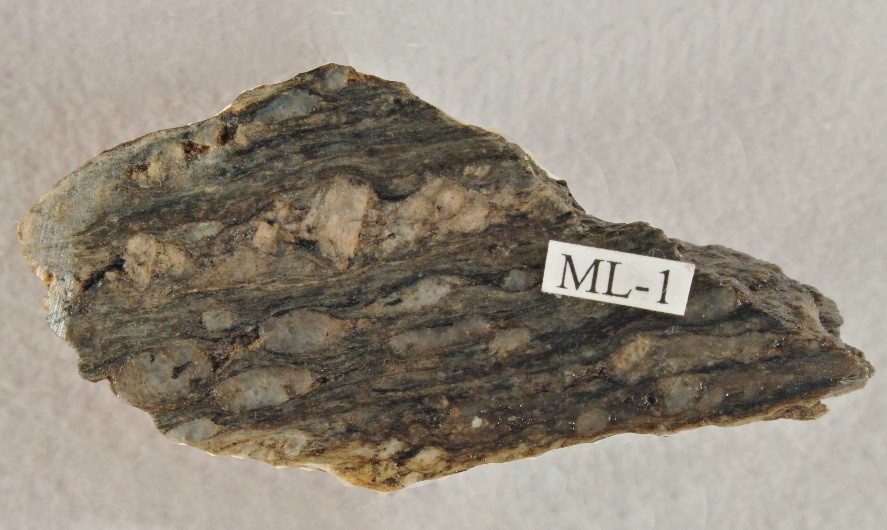
Proximal alteration with intense shearing. Mineral assemblage: muscovite-quartz-albite-calcite-rutile-pyrite ± K feldspar(?). Sample length 7.5 cm. Photo Reijo Lampela, GTK
Orogenic gold deposit in amphibolite facies rocks, Kaapelinkulma, Pirkanmaa belt
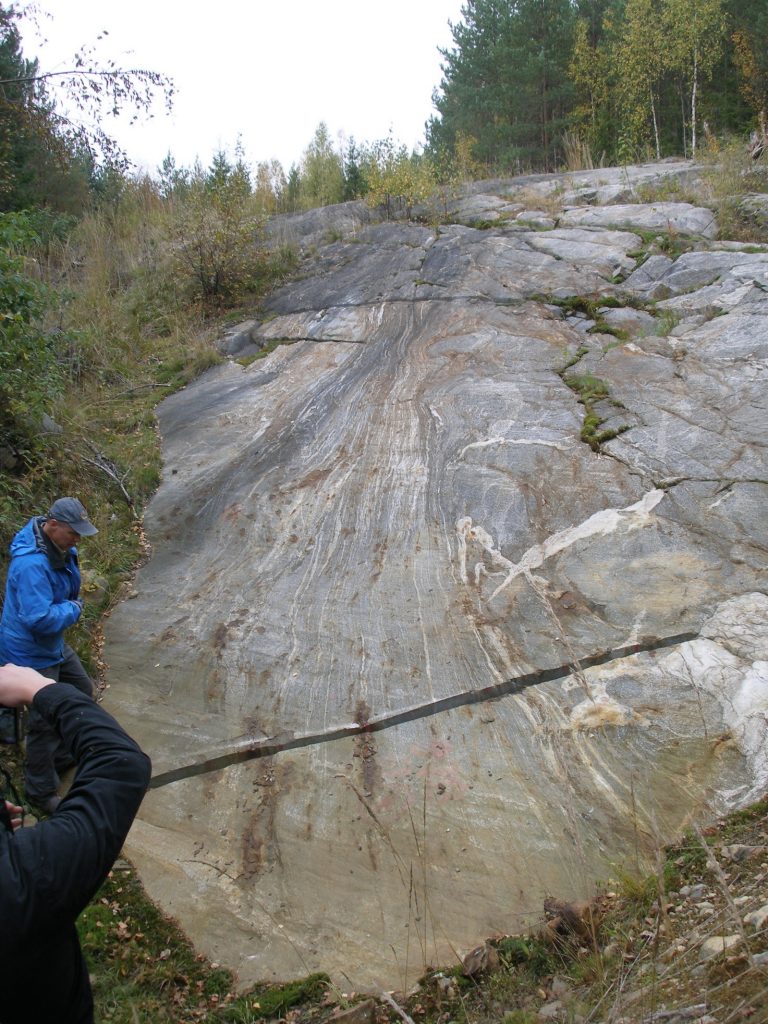
Gold-mineralised shear zone in quartz diorite. Photo Pasi Eilu.
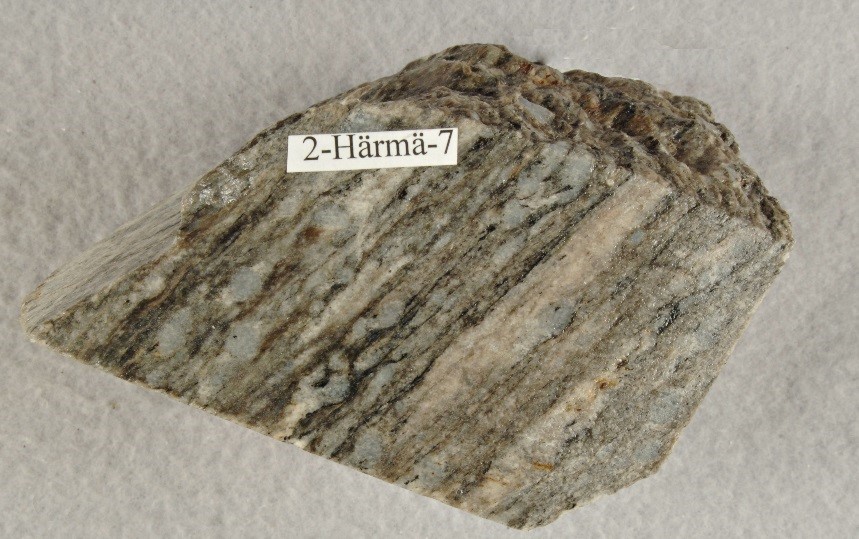
Intermediate alteration. Quartz phenocrysts distinct, feldspar phenocrysts less easy to detect. Mineral assemblage quartz-albite-K feldspar-biotite-muscovite-calcite-rutile. Sample length 9.5 cm. Photo Reijo Lampela, GTK.
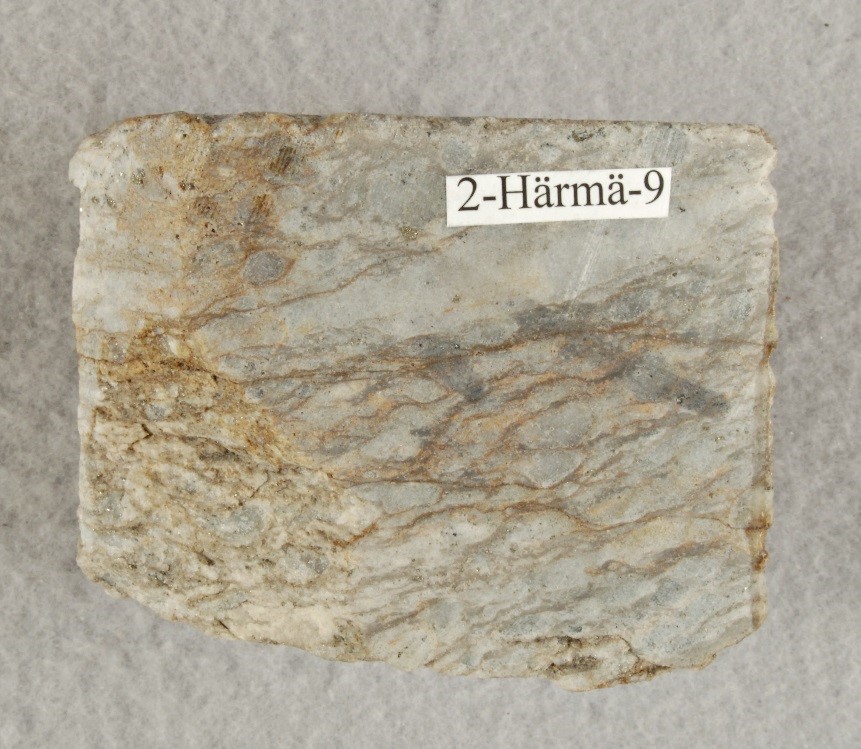
Proximal alteration with intense shearing, sericization and carbonatization. Mineral assemblage: muscovite-quartz-albite-calcite-rutile-pyrite ± K feldspar(?). Sample length 5 cm. Photo Reijo Lampela, GTK.
Orogenic gold deposit in amphibolite facies rocks, Arpola lode, Jokisivu mine, Häme belt
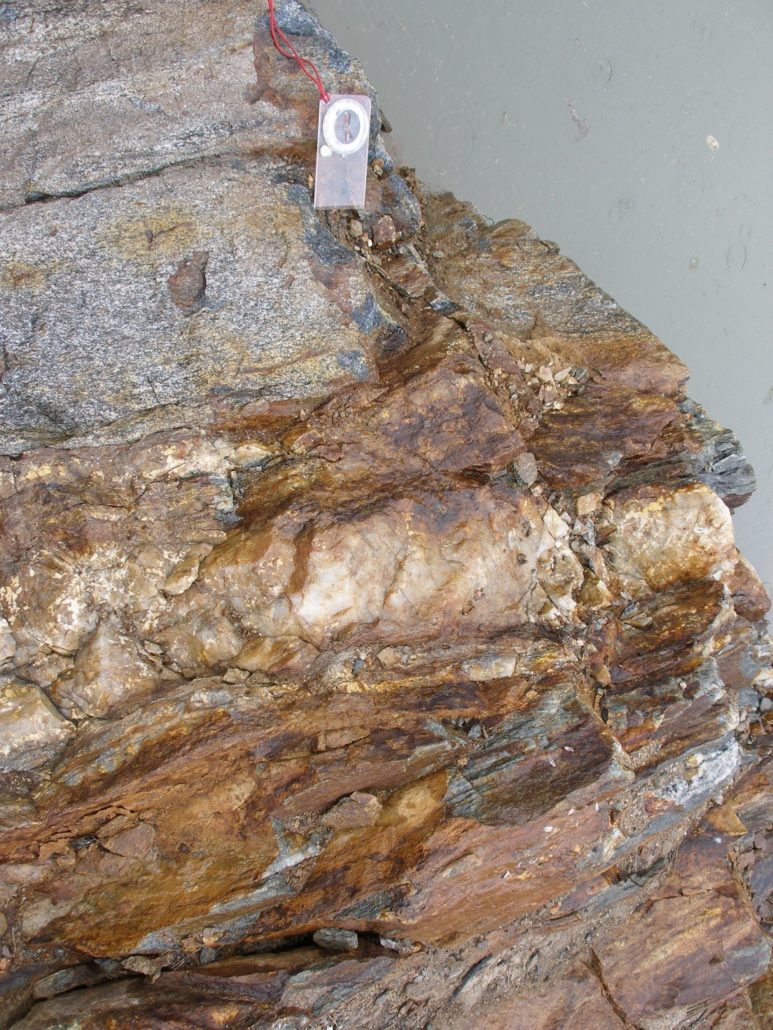
Auriferous quartz veins, sulphidation (rusty domains) in diorite. Compass plate is 11 cm long. Photo Pasi Eilu.